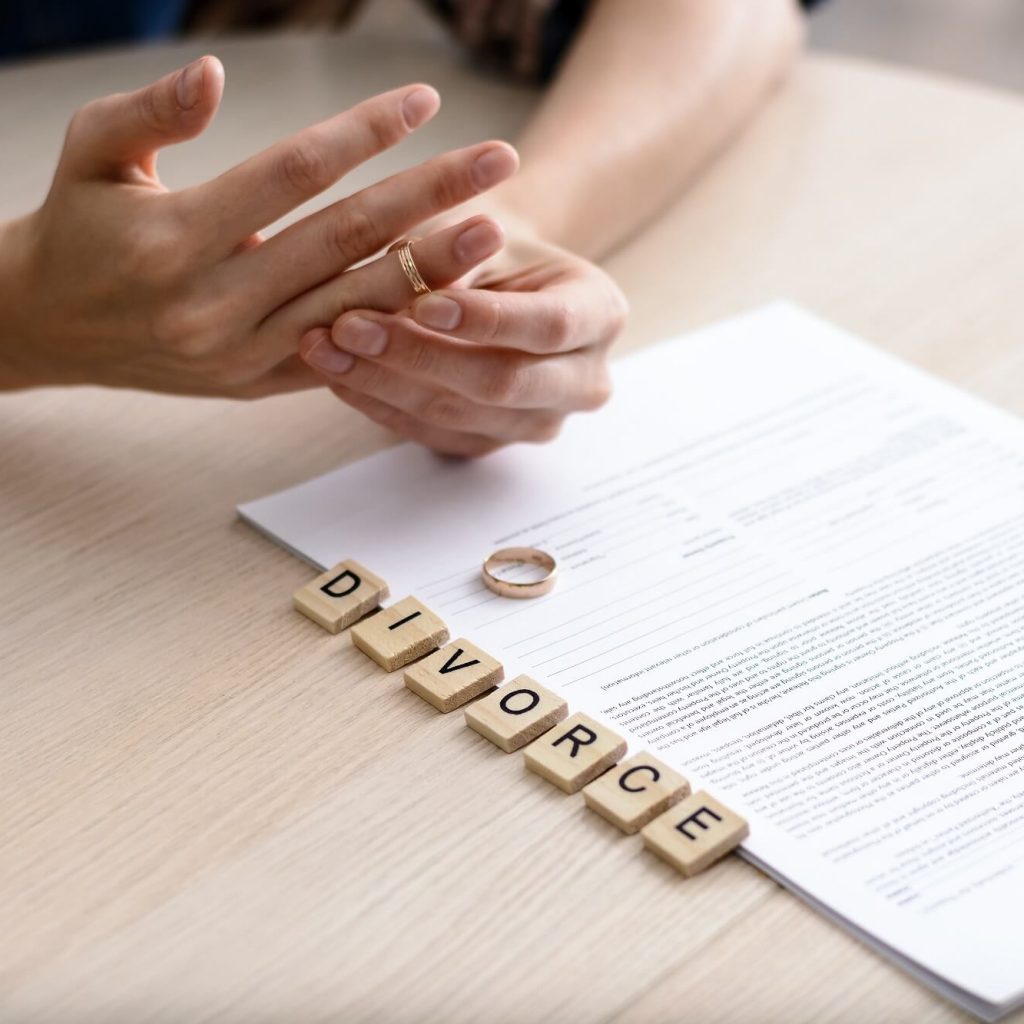Last Updated on April 2024
The decision to end a marriage can be emotionally difficult for the divorcing spouses and can negatively impact their children, if any. To reduce the effects of the marriage dissolution process on all the parties involved, a couple should familiarize themselves with the step-by-step divorce process in New York to know what to prepare for. Below, you can find some information and tips that can be useful if you decide to divorce.
Step 1. Make a Decision
Before submitting the required documents to the court clerk’s office, think once again if your decision to dissolve a marriage is final. If there is any chance of reconciliation, it may be worth trying family counseling to peacefully resolve all your conflicts and continue the marriage.
However, in case your decision about divorce is final, it may be reasonable to start the court procedure as soon as possible. If you’re ready to negotiate the divorce terms with your spouse, you can opt for a no-fault divorce in NY, which can be a fairly quick and non-problematic process.
Step 2. Determine Eligibility to File for a Divorce

To start the divorce, you must have the right to file for marriage dissolution in the state. So, figure out if you meet the residency requirements in New York. Any of the following should apply to your situation:
- either spouse has been a resident of New York for at least two years before the divorce proceeding;
- one of the spouses was a continuous resident of the state for at least one year, and one of the following is true: the marriage was registered in New York; or the couple resided in the state as a family; or the grounds for divorce occurred in New York;
- both spouses currently live in the state, and the reason for the divorce happened there.
Step 3. Decide on the Grounds for Divorce

Your next step should be to choose a ground on which to request the dissolution of marriage. Your decision at this stage can affect the length and complexity of the divorce process. In the Complaint, you will need to state one of the following grounds:
- Irretrievable breakdown. You may opt for this ground if your relationship has been broken for no less than half a year and you’ve resolved all the issues regarding property, child custody, alimony, etc.
- Physical or mental abuse. If you state this ground, you will have to provide the court with evidence that your spouse has abused you during the last five years of marriage and that these actions of cruelty pose a real physical or psychological threat to you if you continue the marriage.
- Abandonment. It means one of the partners abandons the other for one year or more. Examples of abandonment can be leaving the spouse without the intention to come back or constantly refusing to have sex with the spouse.
- Incarceration. The ground is applicable if, after getting married, one of the spouses committed a crime and was imprisoned for three or more years. It is also possible to indicate this reason for divorce during the next 5 years after spouse’s release from prison.
- Adultery. If your spouse had an affair during the marriage and someone else can confirm it, or if you can provide the court with undeniable evidence, you can state infidelity as grounds for divorce.
- Divorce after a legal separation agreement. You and your partner must sign and file a legal separation agreement stating that you will live apart for a minimum of one year.
- Divorce after a judgment of separation. To use this ground, a couple must obtain a Judgment of Separation from the court and live separately for one year.
Step 4. Find Case-Specific Forms
Be prepared to fill out many forms to initiate divorce proceedings. You can find them on the New York Court’s website or obtain them at the clerk’s office. Please keep in mind that the list of forms may vary from case to case, so it is necessary to determine the ones needed in your specific situation.
It is also a good idea to collect in advance any official documents, such as passport, marriage certificate, any contracts you have with your spouse, property deeds, etc., that may be needed during the completion of the forms.
Step 5. Fill out the Paperwork

Once you have found the forms you need, make sure to fill them out properly. Check if:
- there are no grammatical errors,
- you have indicated only true information about the case,
- you have not concealed anything from the court.
If you do not understand how to complete the forms or doubt whether you have filled out everything correctly, you may contact an attorney for help. Still, mind that it can be pricey.
Also, if you’re considering a no-fault uncontested divorce, you have the opportunity to order the required forms from an online service at a moderate fee.
Make copies of each document and notarize them, if necessary.
Step 6. File the Complaint for Divorce with the Appropriate Court
As soon as you have completed the forms, you must go to your county clerk’s office to file a petition for dissolution of marriage, also known as Verified Complaint in the state, and other mandatory documents. After you file for divorce in NY, you become a plaintiff, while the other party is a defendant.
As an alternative to submitting papers offline, the filing can also be done online through the NYSCEF system.
Keep in mind that you will need to cover a filing fee at this stage. However, you may also be eligible for an exemption from paying these fees based on your financial situation.
Step 7. Serve Your Spouse with Divorce Papers

During this stage of the divorce process, a third-party involvement may be required to deliver the paperwork to your spouse. It is necessary if your spouse will contest the divorce. You can choose any adult New Yorker for this mission. That person must fill out the Affidavit of Service and return it to you. It will mean that the other party has received the papers informing them of the start of the divorce proceedings.
You may hand over the paperwork to your spouse on your own, but only if you are confident that they will agree to an uncontested divorce and will accept and sign the papers.
If you don’t know where your spouse is, you may clarify with the court if there are any alternative methods of serving the defendant.
Step 8. Go to Trial (If Necessary)
Once your spouse has received the documents, they have 20 or 30 days to respond if they are in or out of the state, respectively.
After the service, you must get your case on the court calendar and submit all the remaining paperwork so the court can review it.
If you have received a Notice of Appearance from your spouse, it means that they do not agree with the terms specified in the Complaint. So, you should be ready to have a trial in your legal process of divorce. There will be one or several court hearings, during which the judge will review your case and, based on the local laws, make decisions on child custody, alimony, property division, etc.
However, if your spouse has signed all the forms and has no claims, a trial will likely not be necessary. The same will be true if you do not receive any response from your spouse within 40 days, meaning your spouse has “defaulted.”
Step 9. Finalize Divorce in Court

Once the judge makes a decision on the case, you will receive a Judgment of Divorce, which is sometimes referred to as a final decree of divorce.
To finalize the divorce proceedings, you should file a copy of the final Judgment with the clerk’s office if the court will not do it for you and deliver one copy to the defendant using third-party assistance. Now, a marriage is officially dissolved.
Commonly Asked Questions
How long does a divorce take in NY?
On average, the divorce process can take from a few months to half a year and more. Since each case is unique, everything will depend on how soon the parties can come to an agreement, how quickly they file the papers, whether hearings are needed, how busy the court is, etc.
How much does it cost to get divorce in NY?
The price of a divorce can start at around $500 and reach $10,000 or more depending on whether it is contested or not, if an attorney is involved, how many hearings will be needed, etc. The minimum expenses on an uncontested case can be $335 in mandatory court fees.
Do I have to go to court for an uncontested divorce?
If you and your spouse have worked out all the divorce issues, the judge can sign the Judgment without the need for you to appear in court. However, if they have any questions about the case or information indicated in the divorce forms, you will likely need to visit the court.

Start by creating a free account on our website to see if you qualify for an online divorce in New York. Prepare all the paperwork needed for filing an uncontested divorce online without lawyers.

Rafael Hebert is an experienced writer specializing in such topics as infidelity in marriage and divorce. His works can be seen on popular blogs like Marriage.com and Divorce Magazine. Having background in relationship counseling, Rafael is dedicated to helping individuals with emotional issues surrounding infidelity and educating them on their divorce options. In his free time, Rafael enjoys watching documentaries and visiting film festivals in different states.








